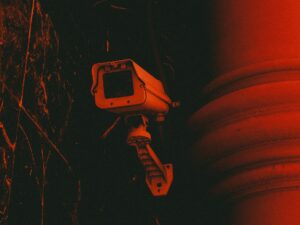
Even at the time of writing, there are differing views on the origin of the new coronavirus (SARS-CoV-2) discovered in 2019, especially the UN investigation into the “man-made theory” that it was spilled from a laboratory in Wuhan, China, where the first new coronavirus infection (COVID-19) was confirmed, and the Chinese The U.N. investigation into this theory has been stalled due to the uncooperative attitude of the Chinese government. The Sunday Times, a British news media outlet, reported that an investigative report by U.S. investigators who were looking into this theory revealed that research on combining coronaviruses was being conducted at the Wuhan Virus Research Institute in cooperation with the Chinese military.
The Wuhan Virus Research Institute began serious research on coronaviruses after the SARS coronavirus outbreak in 2003. SARS, which infected 8,000 people and killed 774 in 29 countries around the world, beginning with farmers in Guangdong Province who contracted severe respiratory infections, led to the recognition of the need for a vaccine against such a virus.
At that time, Shi Zhengli, an epidemiologist at the Wuhan Virus Research Institute, was assigned the role of finding out how SARS broke out. Having spotted bats, which were known to be linked to various deadly viruses such as rabies, Shi scoured caves for bat feces samples, earning her the nickname “Batwoman.
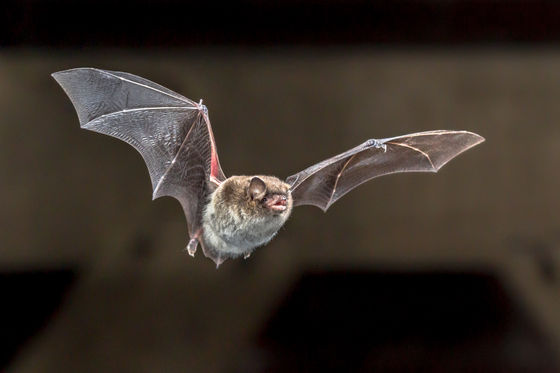
The research team that set out to test the SARS virus thus found was joined by Peter Daszak, a zoologist from England and head of the animal welfare organization EcoHealth Alliance. Animal welfare groups that protect pets and endangered animals have had difficulty raising funds for their work, but Daszak succeeded in raising $18 million (about 2.5 billion yen) over five years from PREDICT, a U.S. government research program that recognized the dangers of SARS, and he received $1 million (about 140 million yen) of the grant Of the grant, $1 million was allocated to the Wuhan Institute for Virus Research.
In 2012, the research team succeeded in discovering a new species of virus in a cave in Yunnan Province in southern China. Named WIV1 after the Wuhan Institute of Virology, this virus, the closest to SARS found so far, was proven in experiments to be capable of infecting human cells.
However, when the research team was unable to culture SHC014, the second SARS-like virus found in the cave, they contacted Ralph Barrick, a veteran virologist at the University of North Carolina. Barrick is a leading researcher on increasing the infectivity of coronaviruses through a technique called “gain-of-function” and an expert in creating “humanized mice” with human-like lungs and blood vessels to see how they affect humans.
After receiving data on the genetic sequence of “SHC014” from the Wuhan Virus Institute, Barrick began experiments to create a new mutant by inserting the gene for the “SHC014” spike into a copy of the original SARS virus created in his lab and testing it in humanized mice.
Meanwhile, in May 2014, the EcoHealth Alliance succeeded in obtaining a $3.7 million grant from the U.S. National Institutes of Health (NIH), of which more than $500,000 (about $70 million) went to the Wuhan Virus Research Institute for equipment and another $130,000 (about $18 million) went to Shi and The research was soon afterward delayed due to the difficulty of continuing the research.
However, a problem soon arose that made it difficult to continue the research. Barack Obama’s administration announced a “freeze on all gain-of-function experiments that could reasonably be expected to increase the infectivity or lethality of the pathogen. That included the SARS research that Barrick and his colleagues had been conducting.
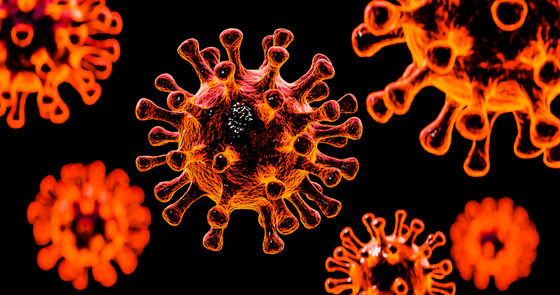
Barrick and Ishi then took advantage of a loophole that made an exception for “urgent and safe cases” to continue their research, and in November 2015 they jointly published a research paper showing that a virus that fused a copy of SARS with “SHC014” caused severe lung damage in humanized mice and was also resistant to the vaccine for SARS. The study, which showed that a copy of SARS and “SHC014” were resistant to the SARS vaccine, caused severe lung damage in humanized mice and caused a major stir.
For example, Simon Wayne Hobson, a virologist at the Pasteur Institute in Paris, warned, “If the virus were to leak out, no one would be able to predict how it would spread.”
When Barrick departed in response, the Wuhan Institute for Virus Research began its own research using Barrick’s technology and produced two new variants of “WIV1” fused with another virus. This is documented in a report that Daszak submitted to the U.S. government on his research through May 2016. The report also revealed that the Wuhan Virus Research Institute planned to experiment with combining a bat-derived virus with a camel-derived virus, the MERS coronavirus. Middle East Respiratory Syndrome (MERS) is an infectious disease that caused an epidemic in the Middle East, primarily in Saudi Arabia, in 2012, with a fatality rate of about 35% and 858 deaths as of November 2019.
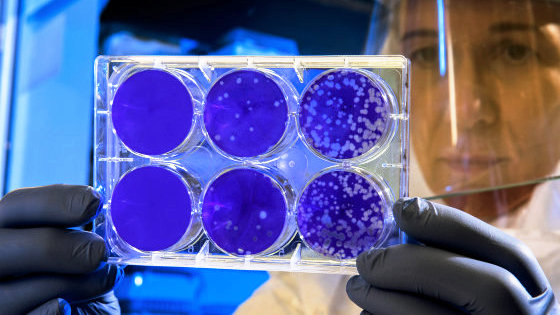
The U.S. government was alarmed that the research team’s expansion into MERS would violate the banned gain-of-function experiments, but Daszak argued that the MERS experiments were not gain-of-function experiments because they were unlikely to increase the virulence of the virus. The conflict eventually settled on a compromise: if a new mutant virus that multiplies 10 times faster than the natural virus is created, the work would be stopped and reported to the U.S. authorities.
According to the paper published by Shi, the research team had attempted to create eight mutant viruses of the SARS-like coronavirus by 2017, two of which were found to infect human cells. However, most of this research was conducted in a facility with a biosafety level of “2” at the Wuhan Institute for Virus Research. This protective posture is so simple that it can be compared to dental surgery, and experts who visited the Wuhan Virus Institute in January 2018 reported “a serious shortage of properly trained technicians and researchers needed to safely operate this tight containment laboratory.”
By this time, research at the Wuhan Virus Institute had become even more dangerous, as the research team was experimenting with fusing a SARS-like coronavirus and “WIV1” to infect humanized mice. In particular, the mutant virus fused with “WIV1” and “SHC014” killed 75% of the mice and was three times more lethal than the original “WIV1.
The study was funded by the Eco-Health Alliance, but Daszak’s April 2018 report does not mention the Wuhan Virus Research Institute’s experiments. In addition, a grant program renewal application submitted by Daszak to the NIH later that year stated that the mice showed “mild SARS-like clinical signs,” but in fact six of the eight humanized mice had died.
Aiming for further research, the Wuhan Virus Research Institute pitched the study to the Defense Advanced Research Projects Agency (DARPA) in hopes of extracting the next round of funding from the United States. In an application titled “Defuse,” the Wuhan Virus Research Institute proposed an experiment to fuse WIV1 and SHC014, but DARPA refused to fund it.
One planned experiment involved inserting a “furin cleavage site,” a genetic sequence that makes the virus more infectious, into the pathogen. Dasak and the Wuhan Institute for Virus Research say the study never took place, but The Sunday Times notes that “it is worth noting that SARS-CoV-2, discovered in 2019, was the first SARS-like coronavirus to have a ‘furin cleavage site.'”
So far, this is the ostensible research that the U.S. funders had been reported on, but investigators speculate that the Wuhan Virus Research Institute was also working on a secret, behind-the-scenes project that Daszak was also privy to. The genesis of the project dates back to 2012, when six men who were helping the Wuhan Virus Research Institute exterminate bats living in an abandoned mine in Sumijiang Hani Autonomous County developed symptoms of high fever, coughing, and pneumonia.

After spending four years examining the mine, the Wuhan Institute of Virus Research collected 1,300 samples from local bats and found 293 coronaviruses. After finding that one of the viruses was derived from the SARS strain, Shi named the virus “RaBtCoV/4991” in the paper he published about it. However, the Wuhan Virus Research Institute did not disclose that this virus had killed three out of six people, and renamed the virus to “RaTG13. This was reportedly done so that the virus could not be easily linked to the mine where it was found.
State Department investigators who set out to investigate the origins of COVID-19 published a report in early 2021 based on information intercepted by U.S. intelligence agencies. It stated two things: that researchers at the Wuhan Virus Research Institute were experimenting with “RaTG13” collected from the mine, and that classified military research, including animal testing, was being conducted at the Wuhan Virus Research Institute just prior to the pandemic.
According to three investigators interviewed by The Sunday Times, the dangerous experiments conducted on the SARS virus found in the cave were also conducted in secret on “RaTG13” and similar viruses found at the same location. One of the investigators said, “They were dealing with nine variants of SARS-CoV-2. We are convinced that they were also working on unpublished, more SARS-CoV-2-like variants,” he said.
Investigators believe that one of the reasons these studies have not been publicized is that the underlying projects were funded by the Chinese military. In the report, the investigators said, “Despite its civilian institutional appearance, the United States has determined that the Wuhan Institute for Virus Research has collaborated with the Chinese military on papers and secret projects.”
One investigator said that the secret military-funded RaTG13 experiment had begun in 2016. Since that time, the Wuhan Institute for Virus Research has stopped revealing its research and rarely releases information about new coronaviruses. The influence of the military is only hinted at by the fact that the military scientist named in the paper is listed as working at the Beijing Institute of Microbiology and Epidemiology, a military medical school base.
Investigators believe that the Chinese military assisted the Wuhan Virus Research Institute in its research because it intended to use the virus as a bioweapon. The rationale is that a military researcher named Zhou Yusen patented the COVID-19 vaccine with surprising speed in February 2020, only a little more than a month after the virus surfaced.
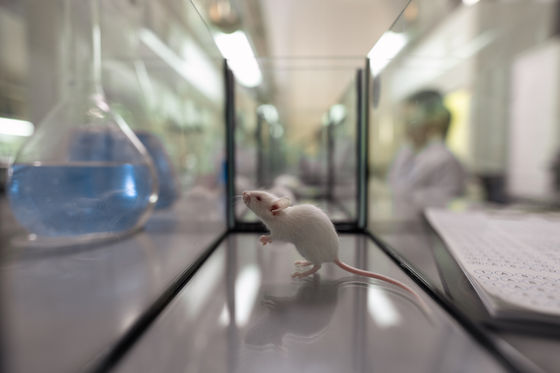
In a research report on the origins of COVID-19 published in April 2023, Robert Caledoc, head of the U.S. Vaccine Development Program, concluded that “Zhou and his team should have started developing a vaccine in November 2019, just after the pandemic began, at the latest.” He concluded. Yet despite such significant accomplishments, Zhou’s death in May 2020 at the age of 54 was given little treatment, with the Chinese media simply listing him as “deceased” in brackets after his name. One witness testified that Zhou fell from the roof of a research institute in Wuhan, but this has not been corroborated.
Investigators also obtained intercepted communication records that indicated that three researchers who were conducting experiments on the acquisition of coronavirus functions in a level 3 laboratory at the Wuhan Virus Research Institute collapsed with coronavirus symptoms in mid-November 2019. One of the researchers’ family members has since died.
One researcher said, “We can say with confidence that the virus that caused the collapse was COVID-19 because the three researchers were working on advanced coronavirus research in Shi’s lab. They are trained biologists, in their 30s and 40s. Researchers of this age group rarely fall ill from just any infection,” he said.
Since then, many researchers outside of China have attempted to investigate, but the full extent of the situation is not known. Alice Hughes, an associate professor at the Chinese Academy of Sciences and a British researcher who conducted research to collect samples from the mine in question and is an expert on bats, was taken in for questioning by police the day after the samples were collected and held for 48 hours. Hughes was forbidden to discuss her research in detail and was forced to move to Hong Kong after Chinese authorities made it difficult for her to proceed with her research due to their surveillance.
Hughes told The Sunday Times, “China is getting to the point where they can say what they want it to be, pick and choose the data that fits their plot, and prevent the collection of data that is inconvenient. I think that is very dangerous,” he said.





